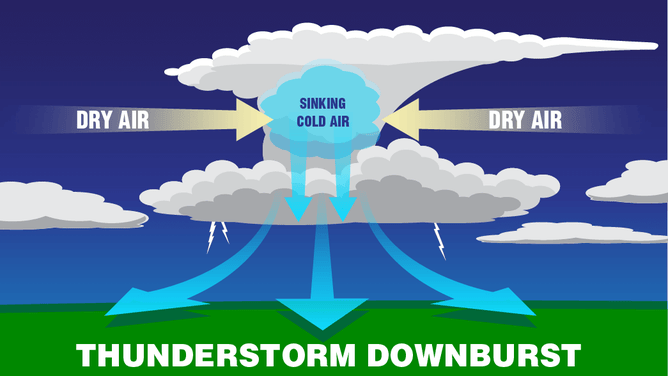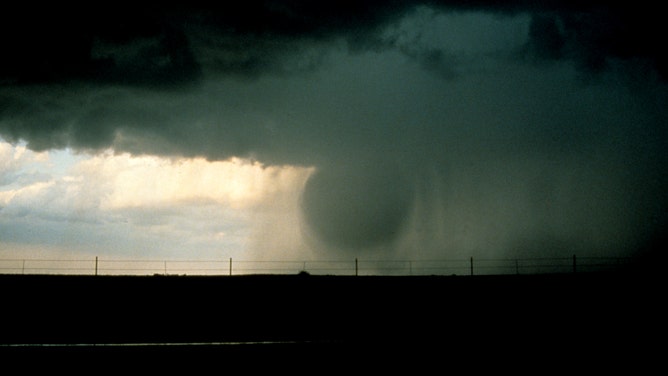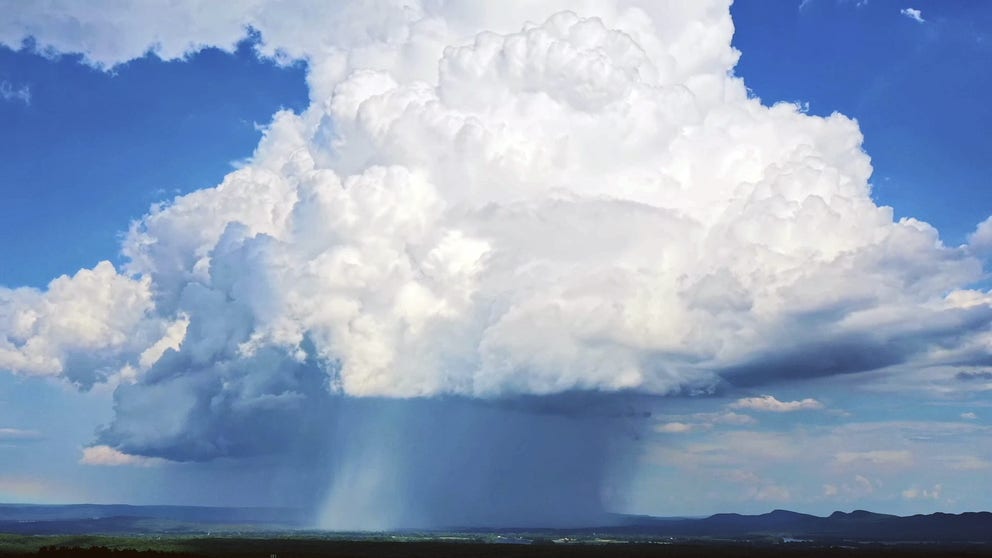Blistering 114-mph wind gust in Texas was caused by rare 'microburst'
A line of severe thunderstorms racing through the Plains on Sunday night brought widespread wind gusts of 70-80 mph to Texas, Oklahoma and Kansas, along with several destructive tornadoes in Oklahoma. But one wind reading stood out: A 114-mph gust clocked in Memphis, Texas.
Blowing dust storm in northwest Texas
Severe weather hit northwest Texas on Sunday, bringing blowing dust storms and thunderstorms. (Credit: @datboyreggieEV/ Weather Tracker/TMX)
MEMPHIS, Texas – That was no hurricane that blew through northern Texas on Sunday night. But for a few brief moments, it sure would have felt like it, thanks to a rare but powerful event known as a "microburst."
A line of severe thunderstorms racing through the Plains on Sunday night brought widespread wind gusts of 70-80 mph to Texas, Oklahoma and Kansas, along with several destructive tornadoes in Oklahoma. But one wind reading stood out: A 114-mph gust clocked in Memphis, Texas, blowing away all other wind reports in the region, with no tornadoes in sight.
Instead, the 114-mph gust was from a microburst – a type of incredible downdraft that spilled from the belly of one of those thunderstorms.
Microbursts are small versions of downbursts, which occur when powerful thunderstorms collect massive amounts of rain and hail inside their cloud towers.

A downburst is a strong downdraft that causes an outflow of damaging winds.
(NOAA)
When drier air infiltrates the cloud, it will cause rapid evaporation. Since evaporation is a cooling process, the now cooler and heavier air drops like an anchor to Earth’s surface – in some cases with wetter storms, ripping out part of the storm's core of rain and hail and carrying it down like an atmospheric water balloon.
When this "balloon" hits the ground and "pops," it brings not only torrential rain and hail, but also sends strong wind racing out in all directions that can reach speeds well over 100 mph and create damage akin to a tornado.
What is a microburst?
Like an atmospheric water balloon, a microburst is an incredible downdraft that spills forth from the belly of thunderstorms.
Such was the case in Memphis, where a microburst brought winds on par with a Category 3 hurricane.
The weather station at the brunt of the onslaught measured 90+ mph wind gusts for less than a minute before quarter-sized hail blasted the wind gauge and sun shields, according to West Texas Mesonet, which operated the weather station.
Meteorologists said damage is usually confined to an area that can be measured in yards and rarely reaches more than a few miles.
In rare cases, if enough clusters of downbursts form, experts said a damaging wind event could stretch hundreds of miles and earn the distinction of becoming known as a derecho. The storms Sunday night nearly qualified for that distinction.
The length of a downburst can vary but, in most cases, only lasts upwards of a few minutes in one particular area.

(NOAA Legacy Photo ERL/WPL / NOAA)

